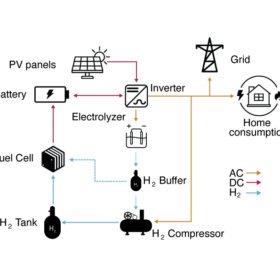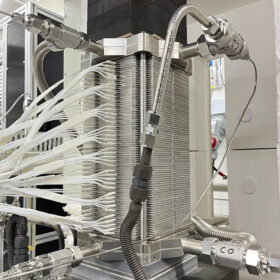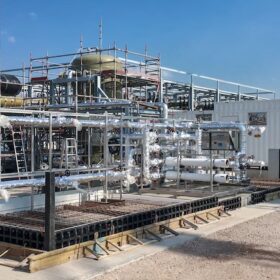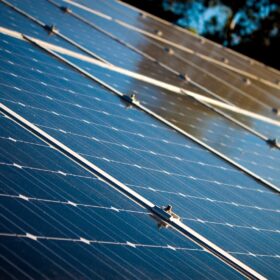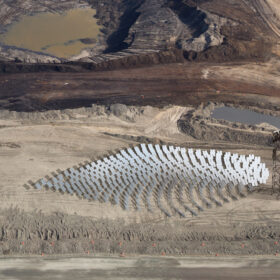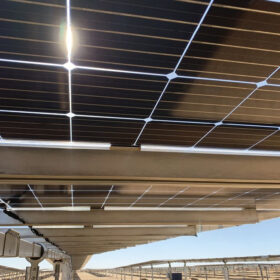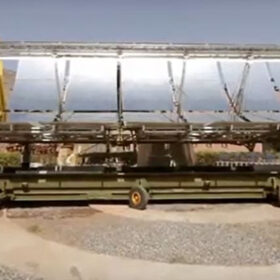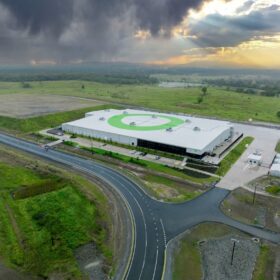PV-driven hybrid hydrogen fuel cell system for building applications
Scientist in Canada have proposed to combine rooftop PV power generation with an alkaline electrolyzer and a fuel cell to generate hydrogen in buildings. The new system is intended at enabling seasonal energy storage and reduce a home’s levelized cost of energy.
New model shows how to power homes exclusively with hydrogen, solar, batteries
Researchers in Spain has found that combining PV power generation with fuel cells and battery storage may help homes considerably reduce their levelized cost of energy. Their simulation reportedly demonstrated homes may also become completely self-sufficient.
EU to provide €720 million to support hydrogen projects
The European Hydrogen Bank’s pilot auction is delivering €720 million ($768.3 million) to seven renewable hydrogen projects in Finland, Norway, Portugal and Spain. Together, they plan to produce 1.58 million tons of renewable hydrogen over a period of 10 years.
Korean researchers build 8 kW solid oxide electrolysis cell that can produce 5.7 kg of hydrogen per day
The Korea Institute of Energy Research has developed a solid oxide electrolysis cell stack that uses a special kind of separator plate to ensure proper flow of hydrogen and oxigen after water splitting. Samsung Electro-Mechanics and Bumhan Industries are now cooperating with the research center to improve relevant manufacturing process.
The Hydrogen Stream: Linde plans 5 MW electrolyzer in Brazil
Linde says its White Martins unit will build a second electrolyzer to produce green hydrogen in Brazil, while Sunfire has launched a front-end engineering and design study (FEED) for a new 500 MW hydrogen project.
Stellantis acquires 49.5% stake in Argentine solar company
Car manufacturer Stellantis has agreed to invest $100 million in a 49.5% stake in Argentina’s 360 Energy Solar. The two parties plan to develop new solar plants, install large-scale storage systems, and produce hydrogen energy.
Making the case for concentrated solar power
Dismissed by many in the solar industry as an overly-complex, outdated technology, concentrated solar power (CSP) is set for a comeback thanks to a scaled-down, modular approach.
Egyptian solar set to expand beyond the massive 1.8 GW Benban PV project
In this edition of the Weekend Read, we turn to Egypt. The gigawatt-scale Benban project showcases the North African country’s solar potential, and premium prices for gas exports make the case for a more diverse energy mix. A nation with grand renewables targets – but slow installation rates – may finally be weaning itself off fossil fuel resources.
SGC, SMO to deploy 100 MW of solar waste-to-energy in Australia
SGC and SMO say they plan to install 100 MW of solar waste-to-energy systems in Australia. They aim to deploy a total of 50 waste-to-energy units in the next three years, with plans to scale up to 1 GW in the future.
Fortescue opens 2 GW electrolyzer factory
Fortescue has officially opened a 2 GW hydrogen electrolyzer factory in Australia and has followed that by also confirming plans to set up a 50 MW green hydrogen production plant in the state of Queensland.

